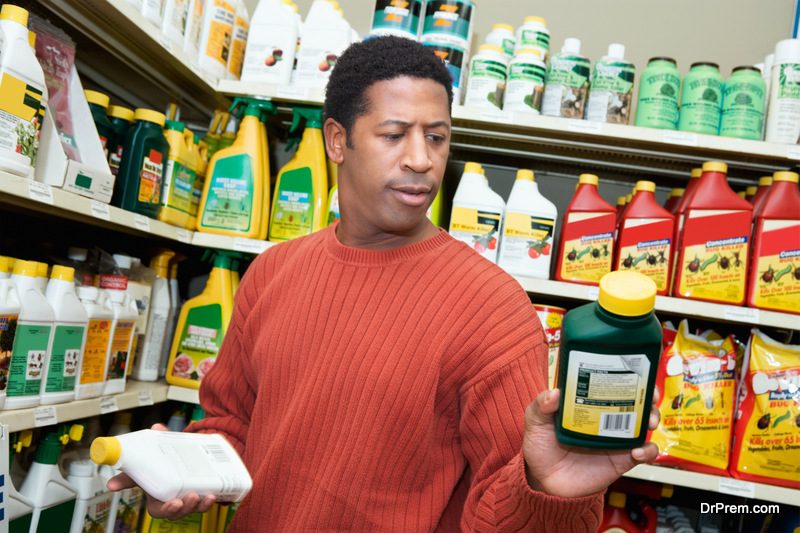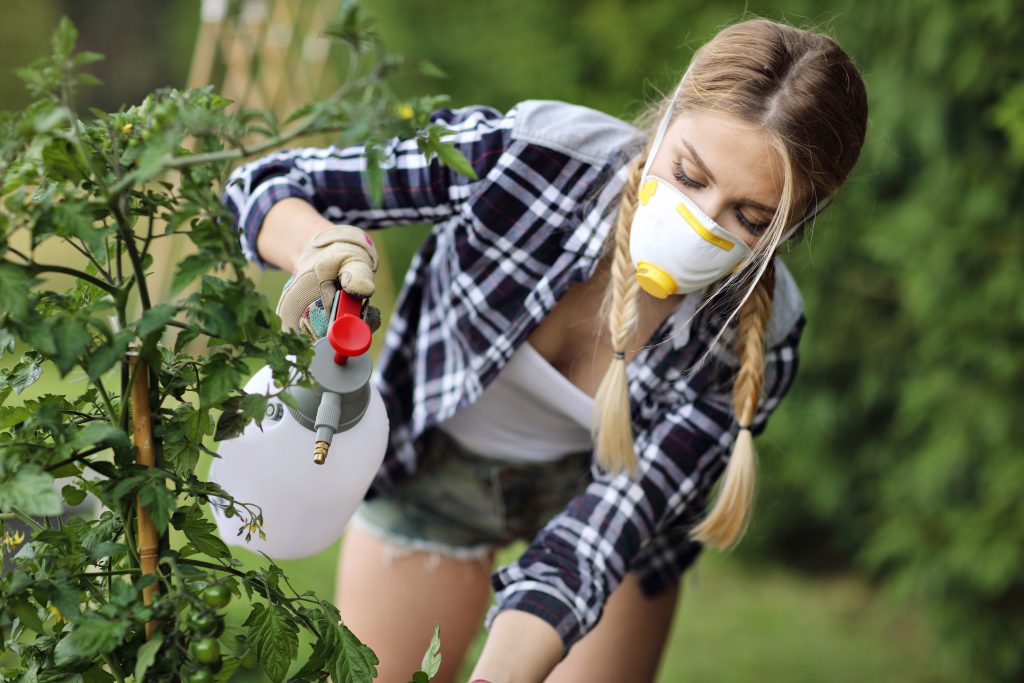Spring is finally upon us. This means we will be opening our windows to let in fresh air, spending more time outside and soaking up all of the sunshine we have craved for the past few months. Unfortunately, spring can also mean increased exposure to the dangerous chemicals that can sometimes be found in our environment.
Environmental exposure to these substances can damage DNA or cause deadly diseases like cancer. Some exposures — like tobacco smoke or sunrays — are easily detected and therefore easily avoided. Others can be harder to escape such as the chemicals found in our water, air, food or materials we use to do our jobs. Even children are prone to health issues due to environmental issues.
There are three main ways that environmental exposure to chemicals can affect your health: breathing/inhaling these substances, making skin or eye contact or directly swallowing the chemicals. While some of the deleterious effects on a body are acute and manifest themselves immediately (like dizziness, skin irritation or eye damage), others are chronic and may take years to complete their damage to your health (such as liver damage or cancer).
We know that some chemical exposure is, from a practical perspective, unavoidable. But how can we mitigate the dangers they pose? The first step is education — and that is why we are breaking down four of the most common spring environmental exposures, and how to combat them.
1. Pesticides

Pesticides are nothing new — they are widely used in agricultural production to prevent or control pests, diseases, weeds or other wildcards that could damage the quality of our food. Although modern pesticides have been developed to function with less impact on the overall environment, they continue to pose serious health concerns due to risks resulting from occupational exposure, food residue and drinking water contamination.
Pesticides are not used exclusively in agriculture. Scientists have found large doses of pesticides around a home. Because of their effectiveness at squashing infestations, homeowners regularly choose to use pesticides to get rid of insects, termites, rodents, fungi and microbes. In fact, according to a recent survey, 75 percent of U.S. households used at least one pesticide product indoors during the past year (such as insecticides and disinfectants).
Exposure to pesticides can also come from products used on lawns and gardens. These treatments can drift into a home, or are tracked inside the house — and that becomes a bigger issue as the weather improves in spring.
Common health effects of pesticides include eye, nose and throat irritation, central nervous system damage, kidney damage, and increased risk of cancer. Chronic pesticide exposure can also lead to damage of the liver, kidneys and endocrine systems.
Pesticides are no joke — the “-cide” in pesticides means “to kill.” To avoid accidental poisoning or deadly exposure, think twice about where and when you should use these chemicals. You should also be cautious of spills, improper use or poor storage. This may sound simple, but always read the label! Even innocent mistakes like transferring products from their original packages into household containers or other seemingly harmless decisions can create dangerous exposure scenarios.
2. Herbicides

A specific type of pesticide, herbicides is poisonous chemicals that are used to kill unwanted plants. You can find herbicides in the form of liquids or powders, and many manufacturers premix them into fertilizer products. Scientists classify herbicides according to their effect:
- Broad-spectrum herbicides will kill any plant on which you apply them.
- Selective herbicides are designed to target only certain types of plants.
- Contact herbicides affect only the part of a plant that the chemical touches.
- Systemic herbicides are designed to be drawn up into the plant through its roots or absorbed through its leaves and stems. Systemic herbicides kill the entire plant.
Modern herbicides may be less toxic than their predecessors, but they’re still poison and should always be handled with caution. Herbicides are designed to be toxic to plants, not animals, which is why skin irritations and burns are some of the most common effects when someone comes into contact with an herbicide. Herbicides can also cause some cancers (such as prostate cancer, cancer of the lungs and cancer of the larynx), nervous system disorders (such as peripheral neuropathy) and damaged immune systems in children or poisoned pets.
Limit your herbicide exposure. Since most homeowners commonly use them for their garden and yard, you may want to consider natural, chemical-free pesticide methods.
3. Pool chemicals

Certain pool disinfectants and sanitizers — mostly chlorine — work to control the growth of certain kinds of algae and bacteria in pool water. While pool chemicals can help protect swimmers from germs, the disinfectants themselves can be dangerous if used improperly.
In 2012 alone, for example, nearly 5,000 people in the United States visited an emergency department for injuries from pool chemicals. Of those injured, 46 percent were children and teens, and more than a third happened at home. Nearly three-quarters of injuries took place between Memorial Day and Labor Day, and about 40 percent happened on weekends.
Most commonly, these injuries came from poisoning — usually from inhaling chemical fumes. They were also hurt when they improperly opened containers, inappropriately stored pool chemicals, failed to wear protective equipment when handling chemicals or when they entered the water too soon after someone added chemicals.
Unless you’re willing to stay out of pools altogether, you’re most likely going to come in contact with pool chemicals this spring. But you can be smart about how you use them. Aside from properly following the instructions for safe handling of pool chemicals, swimmers can protect themselves against germs by not swallowing pool water and not swimming when they are sick or need to use the bathroom.
4. Golf courses

If you are like many Americans, springtime probably means the start of golf season. That bright green landscape you are used to, however, is not simply Mother Nature’s bounty. Golf courses must use chemicals to obtain the lush, manicured course that golfers demand.
This also means that golf courses have large amounts of chemicals stored at all times. If your facility is not using proper chemical handling techniques (like using shelving, keeping products off the floor, clearly labeling units and using spill-contamination kits), it could mean an accidental spill.
It is unrealistic for many people to completely omit the hobby from their lives. Nevertheless, how can you reduce your risk of chemical exposure while still having fun? While they are still quite uncommon, there are a handful of organic courses that use other methods (such as sink detergent and vinegar or microscopic worms) to keep their grounds healthy and free of weeds.
If there is not an organic course in your area, you can golf safely by just being informed. Many golf courses will report their pesticide protocols. Find out what pesticides your course uses and abstain from golfing when a groundskeeper has recently applied pesticides.
If all else fails, make sure you avoid direct contact with greens. Try to wear long pants when the weather allows, always wear the proper footwear and make sure to wash your hands and arms at the end of a round. And never let something from the turf touch your mouth (that means no “go-faster” licks before teeing off.
Knowledge is the best protection against environmental exposure
 It is easy to feel like you are fighting a losing battle against environmental exposure — pesticides are in common use, your neighbors may be loading their gardens and yards with herbicides and it may feel dangerous to even take a swim or play a round of golf.
It is easy to feel like you are fighting a losing battle against environmental exposure — pesticides are in common use, your neighbors may be loading their gardens and yards with herbicides and it may feel dangerous to even take a swim or play a round of golf.
So what can you do? Know what you are dealing with. Make sure you read the labels on products you bring into your home — make sure you know when you are bringing any volatile organic compounds (VOCs, pesticides or herbicides) into your home or yard. Use these kinds of substances sparingly and follow all safety directions closely.
Talk to your neighbors about the products they use in their own homes and yards, and discuss the potential dangers to other families and pets (as well as their own!). If they aren’t willing to mitigate their use of dangerous substances, do your best to politely keep your distance.
Talk to the managers at your favorite pools, courses, club or parks. Find out what kind of substances are used to keep that grass green and the water clear. You can make your own educated decision about how active you want to be in those spaces when you have the full story.
You should not live your life in fear — on the contrary, knowledge is your best weapon against the danger you are trying to avoid. Ask questions, follow directions and take those extra steps you need to keep the people you love safe from harm while reducing the dust levels as well.
One more way to avoid such exposure is to enroll into various courses at Training.DrPrem.com.
Article Submitted By Community Writer




